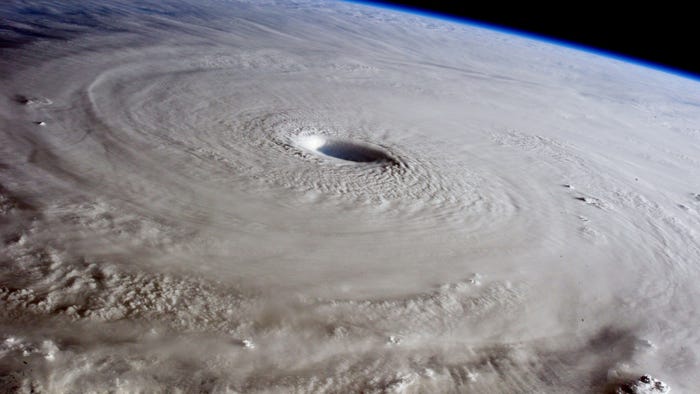Rescue 42 unveils 50-pound deployable cell towerRescue 42 unveils 50-pound deployable cell tower
Deployable solution provider Rescue 42 last week announced the miniNSD AiO (All-in-One) deployable cell site, which weighs only 50 pounds and is designed to provide Verizon cellular broadband coverage with satellite backhaul quickly while being powered by internal batteries or external sources.

Deployable solution provider Rescue 42 last week announced the miniNSD AiO (All-in-One) deployable cell site, which weighs only 50 pounds and is designed to provide Verizon cellular broadband coverage with satellite backhaul quickly while being powered by internal batteries or external sources.
Rescue 42 President, CEO and CTO Tim O’Connell said technological advancements—particularly the Starlink Mini satellite panel and the Verizon Network Extender 3 for Enterprise (NE3) eNodeB—have helped the company create the AiO, which is about the size of an airline carry-on baggage and is designed to be owned by a customer.
“In some ways, this is kind of the Holy Grail that we’ve been envisioning for years but never thought we would be able to really attain, because the technology simply didn’t exist,” O’Connell said during an interview with IWCE’ Urgent Communications. “The reality here is that this form factor can finally exist because of the new Starlink Mini terminal that gives us the ability to have good satellite backhaul in such a small form factor.”
Although the AiO’s open architecture could work with an eNodeB from any carrier, Rescue 42’s latest deployable offering currently is powered by Verizon’s NE3 eNodeB, which can be purchased directly by a customer from Verizon or purchased pre-installed by Rescue 42, according to a company press release.
“To do this, an eNodeB has to be able to turn off, move 100 miles or 1,000 miles, turn back on, identify where it is with GPS, come up automatically in the network with SON [self-organizing networking], shake hands with any network that’s there, do its 911 provisioning and everything automatically, and then come up [and provide coverage],” O’Connell told IWCE’s Urgent Communications.
“Then, you have to be able to turn it off, take it somewhere else, and do it again—without any RAN team having to be deployed, or you can’t have a customer own it.”
While the initial AiO works with a Verizon eNodeB to deliver about a half-mile of cellular and Wi-Fi coverage for as many as 64 simultaneous users, O’Connell repeatedly emphasized that the deployable solution is not directly associated with the carrier.
“This is not a Verizon product,” O’Connell said. “This is a Rescue42 product that carries a customer-procured Verizon device and expands on its capabilities to provide more services than the base unit can do.
“The eNodeB is 100% a Verizon product … We’re just packaging it now with all of the other pieces to make a complete system.”
Those “other pieces” in the weatherproof case include a Cradlepoint router, a wired LAN port, appropriate ventilation, and LiFePO4 batteries—removable for commercial airline travel—that can support about two hours of connectivity when external power is unavailable. O’Connell said the batteries will recharge while connected to external power, even when the deployable cell site is in use.
As with other Rescue 42 offerings, the AiO is designed to be deployed quickly and without the need for a user to have any technical background, according to O’Connell.
“They open the cover, pull two fan plugs outs [for ventilation], and push three buttons,” he said. “Within about five minutes, you have a complete and working cell tower, Wi-Fi hotspot and wired Internet source, if you need it.”
Rescue 42 traditionally has provided deployable solutions for public safety, but the AiO is being offered more broadly through Verizon’s business unit to “anyone that’s got an employee,” O’Connell said.
For example, O’Connell said the AiO’s relatively low cost—less than $14,000 for the most expensive option—could be attractive to retailers needing connectivity to process credit-card payments, such as at county fairs in remote locations. But the AiO could be particularly valuable to organizations wanting to bolster the resiliency of operations when normal broadband connectivity is not available.
“Business continuity/disaster recovery is a huge industry right now,” O’Connell said. “If there is a problem with their building and they need to move their employees temporarily, they could use this to set up their complete Internet and Wi-Fi network, using cell phones to keep their business running.
“This thing is an ISP—it’s got a LAN port. So, if you lose Internet to your store, you could stick this on the roof or in the parking lot, run a cable in, plug it in your router, and restore all of your services, so you can keep your business running—for $14,000.”
O’Connell acknowledged that serving such enterprise customers is new for Rescue 42.
“It opens up massive new markets,” O’Connell said. “That’s great for us.”





